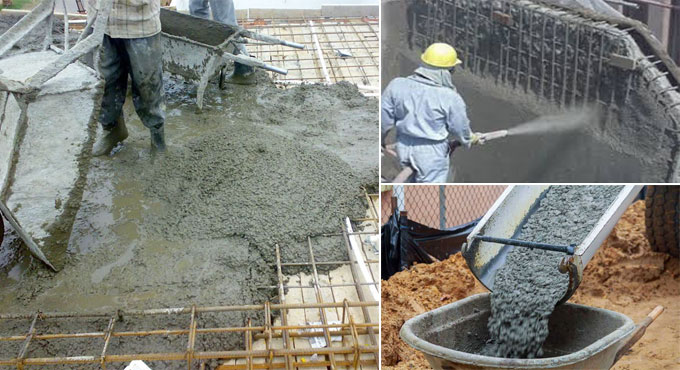
Advantages of microsillica in concrete

Microsilica alias silica fume or condensed silica fume stands for is a mineral admixture that is formed with very fine solid glassy spheres of silicon dioxide. Most microsilica particles remain under 1 micron (0.00004 inch) in diameter, normally 50 to 100 times finer as compared to average cement or fly ash particles. Microsilica belongs to a by-product of the industrial manufacture of ferrosilicon and metallic silicon in high-temperature electric arc furnaces.
Microsilica may be suitable in managing heat formation in mass concrete. It can also be combined with fly ash to provide superior result.
If pozzolanic materials are integrated with concrete, the existent silica in these materials makes a reaction with the calcium hydroxide produced throughout the hydration of cement and develops supplementary calcium silicate hydrate (C ? S ? H) that enhances the strength and the mechanical properties of concrete.
Types of Microsilica: Microsilica is categorized as follow -
1. Powdered microsilica, 2. Condensed microsilica, 3. Slurry microsilica
Impacts of Microsilica on Concrete
1. Fresh Concrete
a. It decreases the scope of segregation, so it is applied as pumping aid.
b. It almost reduces bleeding, as a result finishing work commences before time.
c. Workability and uniformity of concrete reduces.
2. Hardened Concrete: The inclusion of microsilica enhances the following characteristics of hardened concrete -
a. Improves compressive strength that leads to improve flexural and tensile strength.
b. Bond strength
c. Abrasion resistance
d. Lessens permeability; consequently, it safeguards reinforcement steel against corrosion.
e. Impact and cavitations resistance.
f. Sulphate Resistance
g. Heat Reduction
h. Chemical Resistance
Properties of Microsilica:
1. Microsilica belongs to a grey; almost white to black powder.
2. Spherical particles remain under 1mm in diameter.
3. The mass density of microsilica is dependent on the degree of densification and differs from 130 to 600 kg/m3.
4. The specific gravity of microsilica differs among 2.2 to 2.3
Benefits:
a. Minimizes thermal cracking resulting from the heat of cement hydration.
b. Enhance the strength to resist against sulphate and acidic waters.
c. Minimizes the growth of temperature in preliminary stage.
d. Silica fume is cheap; therefore, it is inexpensive.
e. It minimizes the entire slab weight and cost.
f. Inclusion of microsilica reduces efflorescence caused by the refined pore structure and increased consumption of the calcium hydroxide.


